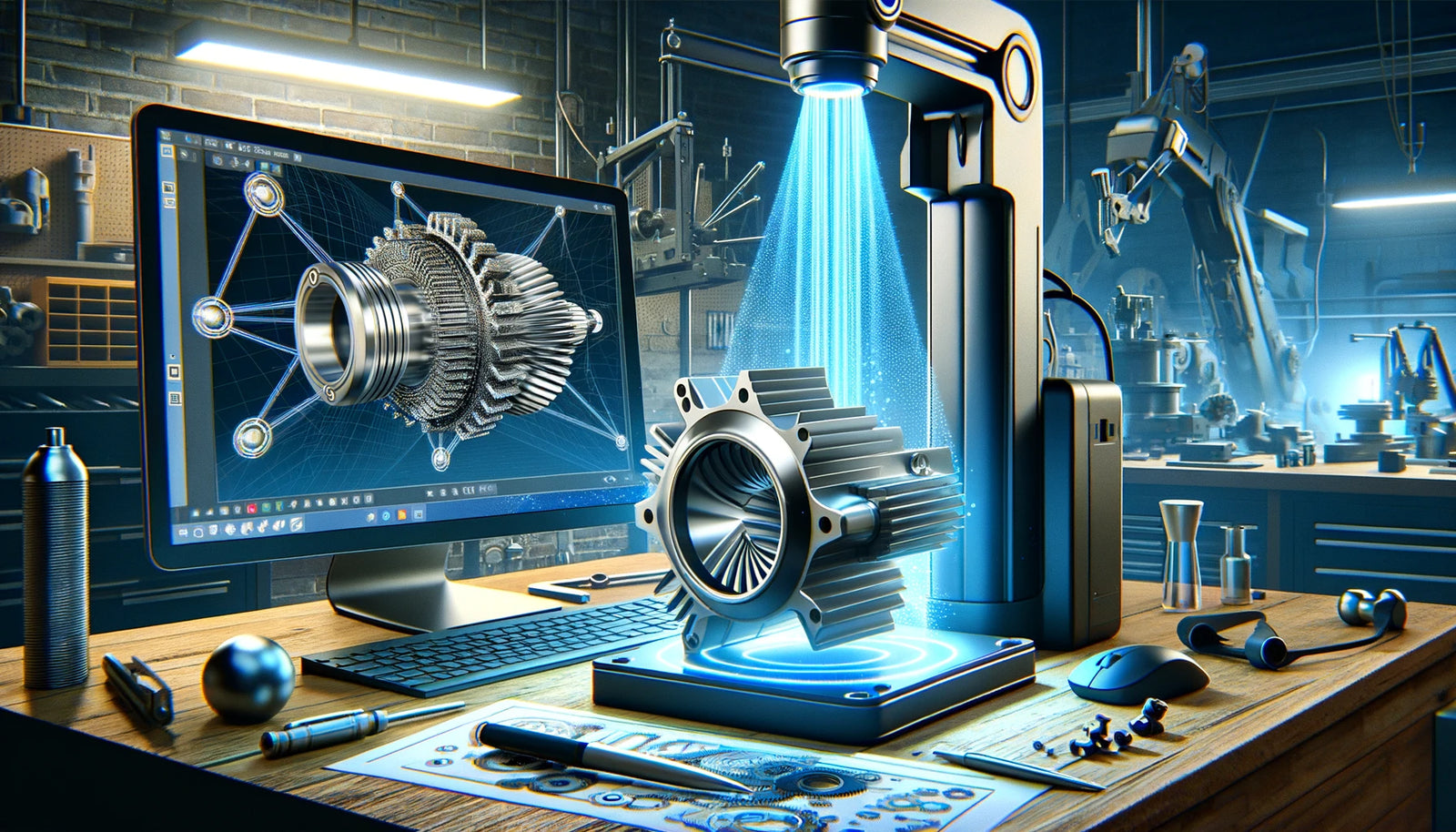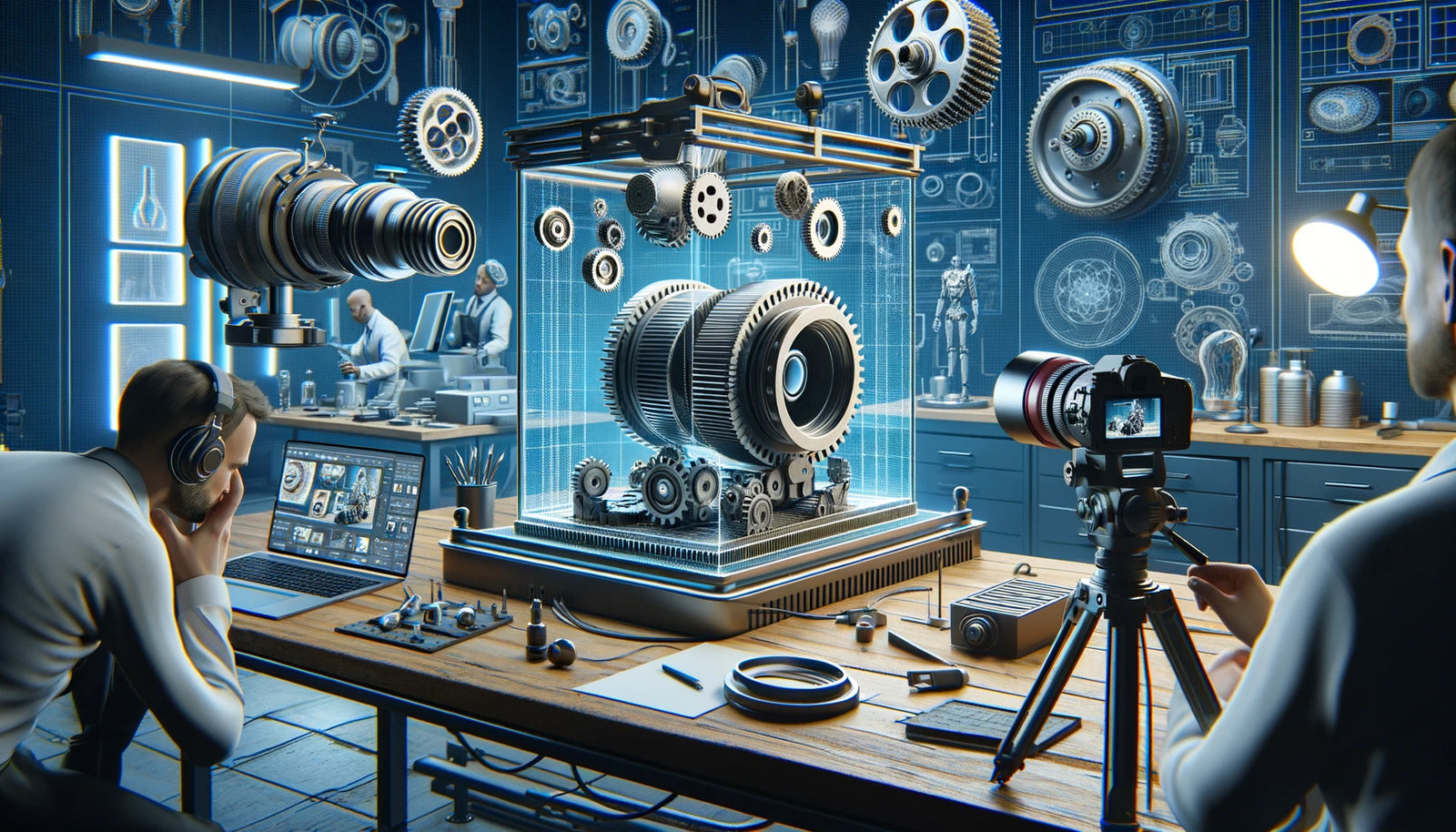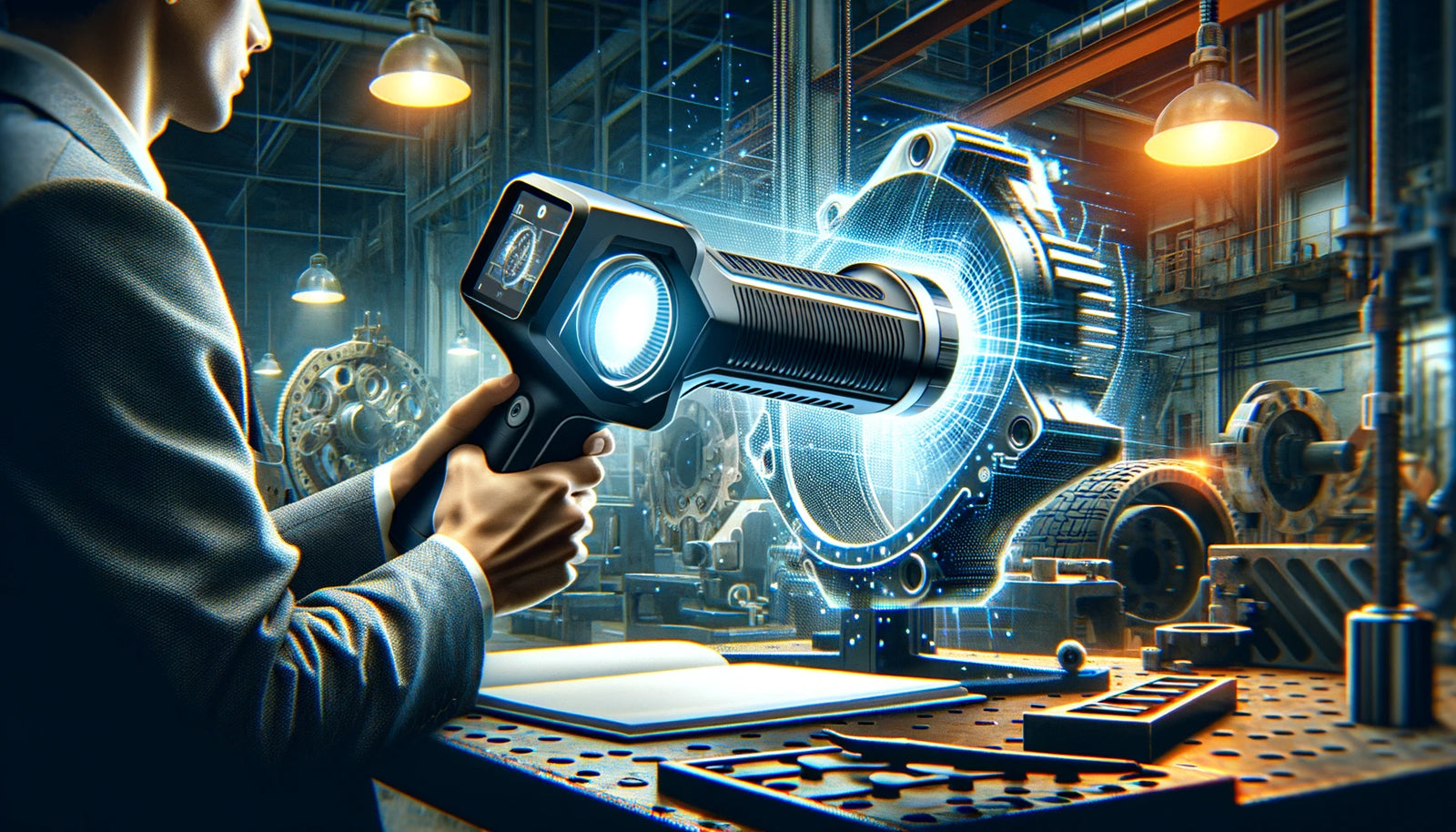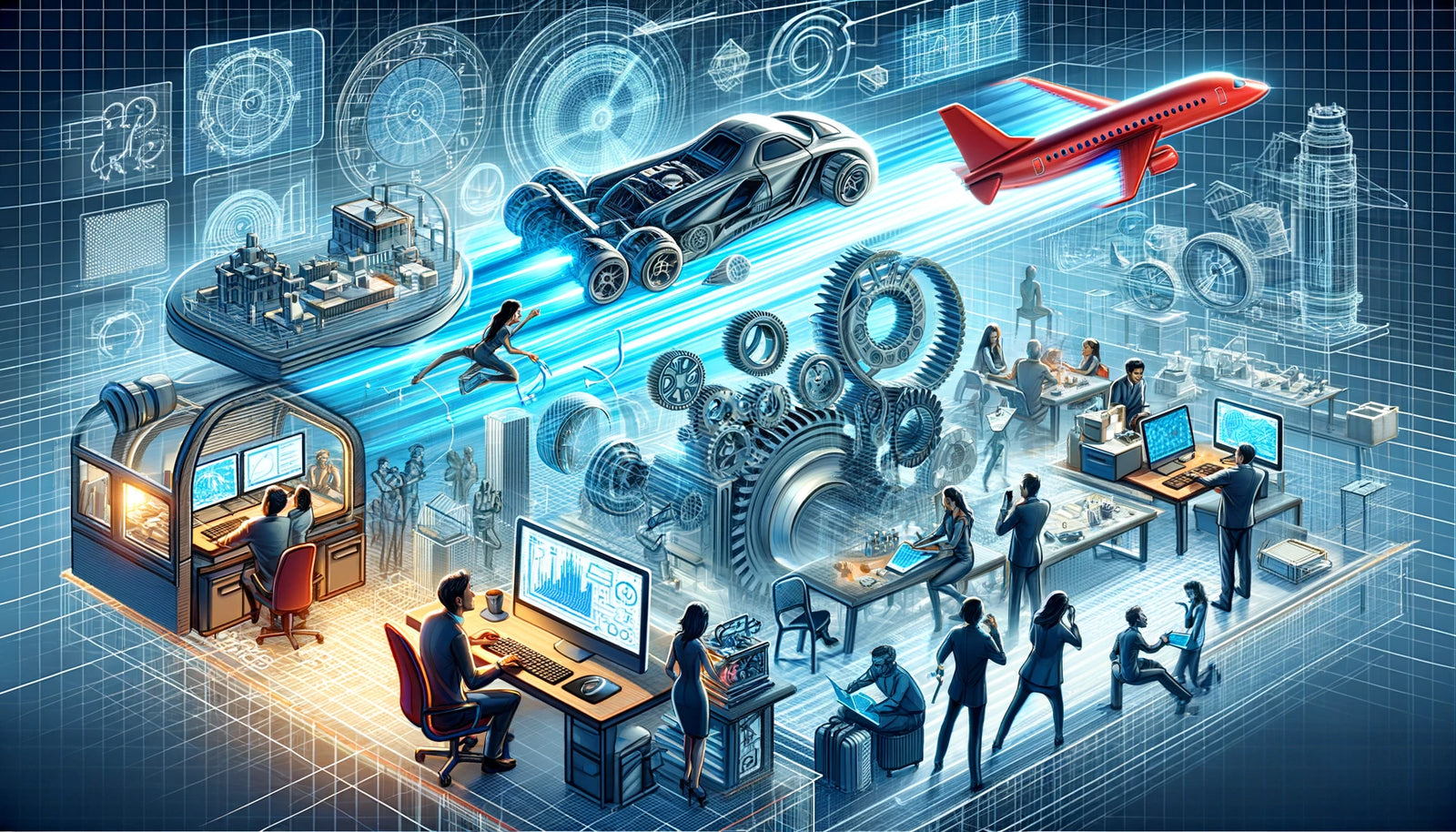A 3D scanner is a device that analyzes a real-world object or environment to collect data on its shape and possibly its appearance (e.g., color). The collected data can then be used to construct digital three-dimensional models. These devices are versatile tools in the fields of engineering, manufacturing, quality control, and cultural heritage, among others. They play a crucial role in reverse engineering, where the goal is to create a digital model of an existing object without having the original design data. They are also invaluable in quality control processes, allowing for the rapid comparison of manufactured parts against their digital twins to ensure accuracy and precision.
There are several types of 3D scanners, each employing different technologies to capture the shape of objects. Here are a few common types:
Laser Scanners
Laser scanners use laser light to probe the object. They often work by projecting a laser line onto the object while a camera, from a known angle, observes the line's deformation. This method, known as laser triangulation, allows the scanner to calculate the distance to numerous points on the object's surface, creating a point cloud that represents its shape.
Structured Light Scanners
Structured light scanners project patterns of light onto an object. They then observe the deformation of these patterns using one or more cameras. By analyzing how the patterns deform when striking the surface of the object, the scanner can calculate the shape of the object. This type of scanner is typically faster than laser scanning and can be used for a wide range of applications, including capturing soft and complex shapes.
Photogrammetry
Photogrammetry isn't a scanning technology per se but a method of creating 3D models from photographs taken from different angles. Software analyzes the photographs to identify common points and reconstruct the object's shape. While not a scanner in the traditional sense, this method is often grouped with 3D scanning techniques due to its ability to produce high-quality 3D models from physical objects.
Handheld Scanners
Handheld 3D scanners are portable devices that can be moved around the object to capture its shape from various angles. These scanners often use either structured light or laser technology and are particularly useful for scanning large or complex objects in situ. They are favored for their flexibility and the ability to scan objects that cannot be easily moved.
CT (Computed Tomography) Scanners
CT scanners, often used in the medical field, can also serve as 3D scanners. They use X-rays to create detailed interior and exterior views of an object. This method is particularly useful for inspecting the internal structure of objects without disassembling them.
Applications of 3D Scanners
3D scanners have a wide range of applications across various industries:
- Engineering and Manufacturing: For reverse engineering, quality inspection, and the creation of custom parts.
- Healthcare: For creating custom prosthetics, orthotics, and for surgical planning.
- Entertainment: In the creation of digital doubles for movies or video games.
- Cultural Heritage Preservation: To digitize artifacts and historical sites for documentation and restoration.
- Architecture and Construction: For capturing detailed measurements of buildings for renovation or retrofitting projects.
The advent of 3D scanning technology has brought about a significant shift in how we interact with the physical world, allowing us to capture, analyze, and reproduce the complexities of physical objects with unprecedented speed and accuracy.






Leave a comment (all fields required)